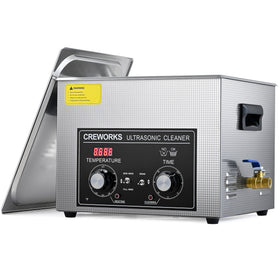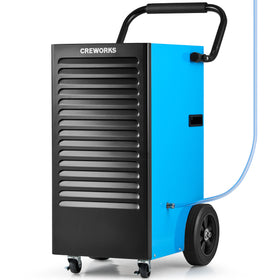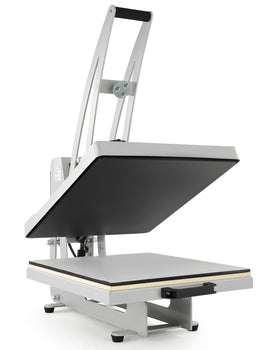With over 10000+ orders
With over 10000+ orders
Here are two ideas that can be true at the same time: Ultrasonic cleaners are amazing for getting things spotless. Ultrasonic cleaners can destroy your valuables if you use the wrong frequency.
Could your ultrasonic cleaner be damaging your items? Using the wrong frequency setting might clean your items poorly or even damage them. This guide will help you understand ultrasonic frequencies and choose the right one for your specific cleaning needs.
Ultrasonic cleaners work by creating millions of tiny bubbles that implode against surfaces, blasting away dirt. But here's what matters:
Lower frequencies create fewer, larger bubbles that blast away dirt with more force
Higher frequencies create more, smaller bubbles that clean more gently and reach tiny spaces
It's the difference between power-washing your driveway and gently cleaning a priceless antique. Both have their place, but mix them up and you'll regret it.

Here's exactly which frequency to use for what:
Heavy automotive parts (engine blocks, cylinder heads)
Large metal parts with stubborn grime
Cast iron components
Industrial machine parts
Parts covered in oil, grease, or carbon deposits
General purpose cleaning (handles 90-95% of everyday needs)
Carburetors and fuel injectors
Basic jewelry without soft gemstones
Metal tools and gun parts
Standard dental instruments
Medical equipment
PCBs and electrical components (robust ones)
Watches (without delicate mechanisms)
Precision instruments
Electronics with small crevices
Semi-delicate jewelry
Watches with more delicate parts
Laboratory glassware
Eyeglasses and optical components
PCBs with sensitive components
Aluminum parts
Ceramic components
Delicate jewelry with soft gemstones
Sensitive electronics
Fine optical lenses
Fragile medical instruments
Semiconductor parts
Micro-electronics
Items with thin coatings
Dental and surgical micro-instruments
Extremely delicate items
Silicon wafers
LEDs
Microelectronic components
Laboratory-grade precision parts
Items with fragile micro-structures

I've spent years testing different ultrasonic frequencies, and here's the truth: for 90% of people, a standard 40 kHz cleaner will handle everything you throw at it.
It's the sweet spot between cleaning power and safety. It's strong enough for your grimy tools but gentle enough for most jewelry.
Only when you get into specialty cleaning do you need to worry about other frequencies:
Professional jewelers often need 80+ kHz for cleaning valuable pieces
Auto mechanics might want 25 kHz for tough, greasy parts
Electronics repair specialists usually need higher frequencies of 100+ kHz
How do you know if you've been using the wrong frequency? Look for these warning signs:
Items aren't getting clean after multiple cycles (frequency too high)
Scratches or damage appearing on cleaned items (frequency too low)
Plating or coatings coming off items (frequency too low)
Loose gemstones after cleaning jewelry (frequency too low)
Tiny spaces staying dirty even after cleaning (frequency too low to penetrate)
Yes, absolutely. Using a frequency that's too low for delicate items can damage them. For example, low frequencies (20-25 kHz) can:
Scratch delicate jewelry
Damage gemstones, especially soft ones like pearls or opals
Harm electronic components
Damage thin coatings or plating
On the other hand, using a frequency that's too high for heavily soiled items will result in poor cleaning performance and wasted time.
Yes. Higher frequency cleaners produce smaller bubbles that collapse with less force, making them safer for delicate items. The tradeoff is that they might not have enough power to remove heavy contamination.
If you clean a variety of items, consider:
Dual frequency cleaners - Some models can switch between two frequencies
Multi-frequency cleaners - Premium models that offer several frequency options
Separate specialized cleaners - Having dedicated cleaners for different applications
If you can only choose one frequency, 40 kHz is the most versatile and works for about 90-95% of all cleaning applications. It's powerful enough for most dirt and grime while still being safe for most items.

The right frequency makes all the difference between damaging your items and getting them perfectly clean. When in doubt, start with a higher frequency and move to a lower one only if needed for tougher cleaning jobs.











